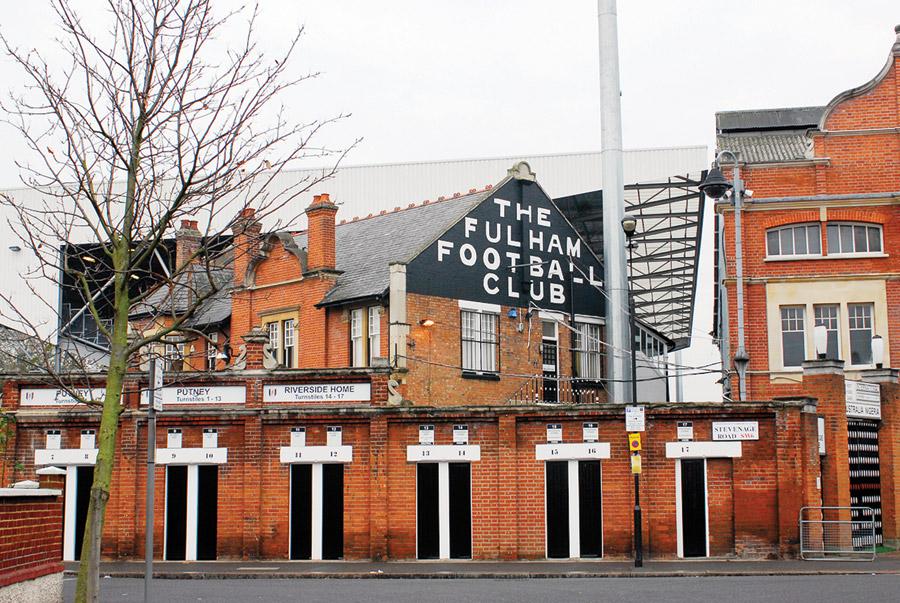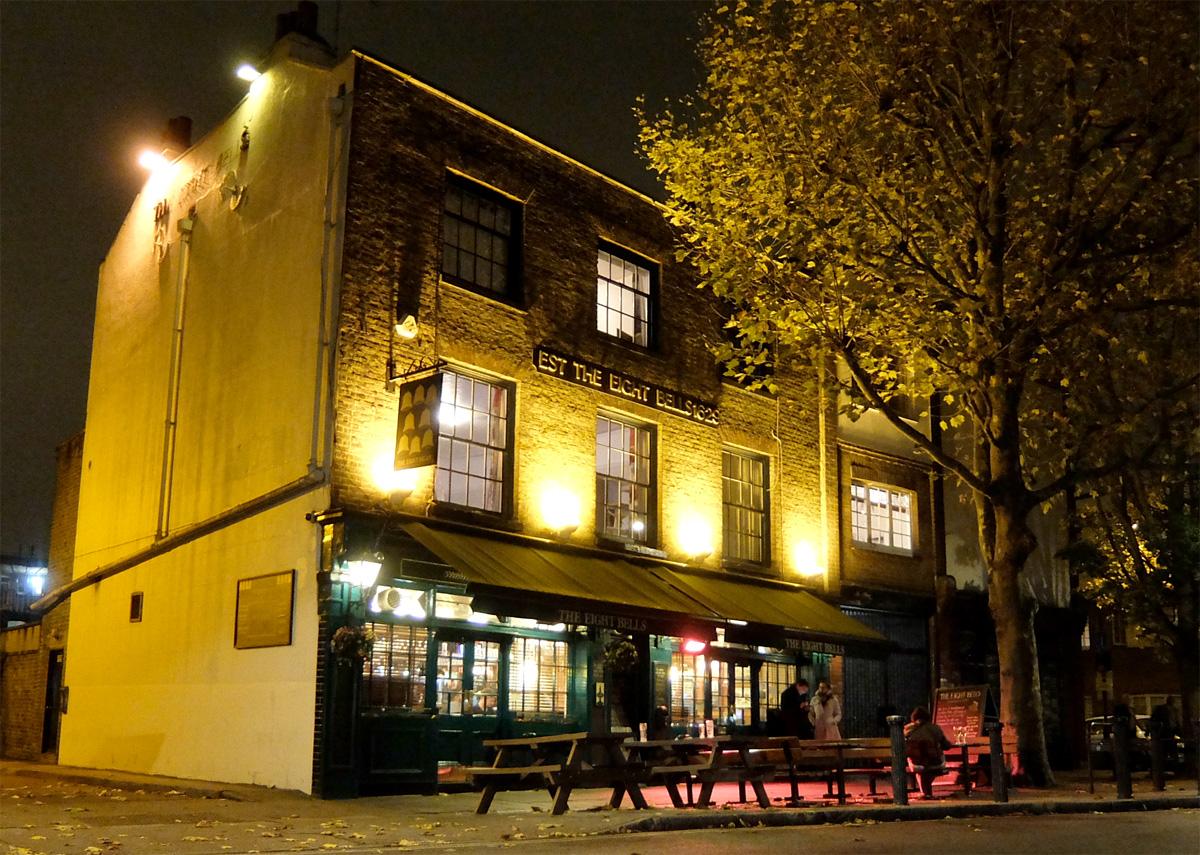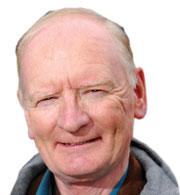In a recent blog I wrote about the places in the Lillie Road area associated with the origins of Fulham FC. A second tour, leading to the famous Craven Cottage ground, can begin in North End Road at St John's Church, a Fulham landmark for almost two centuries.
In the 1891-92, season the Rev Monty Hall (one of the curates there) played at right-back for Fulham FC and helped the team secure the Championship of the West London League. As an Oxford University graduate he could have chosen the famous Corinthian FC, then based at Queens Club, but he preferred to play alongside local working men.
At the end of North End Road you should turn left and walk past the public house, once known as the Red Lion but now the Slug. In the late Victorian period, before the days of radio, news was spread by the telephone. Fulham supporters anxious to hear how the team had fared in an away match would buy a pint at the Red Lion and wait for the result to be phoned through. This was an initiative of the landlord Mr Squires, whose JHS logos adorn the portals. The stone lion (no longer red) still rules the roof and has not been replaced by a gigantic gastropod.
Walking further along Fulham Road you will see on the right Barclays Bank and the offices of Universal Music. The site was previously occupied by a variety theatre, the Granville, named after Granville Sharpe, a resident who played a vital role in ending the slave trade.
In 1902 when Fulham won the championship of the Southern League's second tier, the magnificent trophy was displayed at the Granville Theatre and during an evening performance the comedian Harry Tate invited the players onstage. They received their medals at nearby Fulham Town Hall.
Back in the 1890s, Fulham Town Hall regularly hosted Fulham FC's annual ball. The club and its fans have held celebrations there right up to the promotion season of 1996-97. It was at a public meeting here that Kevin Keegan and Ray Wilkins unveiled the ambitious plans of Mohamed Al Fayed, who had just bought the club.
Off Harwood Road lies an entrance to Eelbrook Common. Fulham FC (then known as St Andrew's) played on one of the public pitches there on 6 October 1883 (the earliest surviving result). That was not a home match but the club did use the common for a few games in 1891. Most of the Victorian pitches in the area have been built over but we can still stand on the Eelbrook and visualise the muddy battles of the past.
Novello Street leads from the common to Parsons Green station. Passengers in November 1890 waiting for a train to Earls Court might have caught a glimpse of Fulham FC playing on a pitch by Fulham Road. This field, known as Pursers Cross, was notorious for having a tree on (or dangerously close to) the pitch. A changing room was provided by the nearby Rose and Crown pub (47 Parsons Green Lane, which is now a brasserie).
From the station you can either walk or take a District Line train to Putney Bridge, where platform two once overlooked the grounds of the exclusive Ranelagh Club ('No person is eligible who is not received in general society').
The Ranelagh moved to Barnes in 1884 but rented out its Fulham pitches for the next four years. Between 1886 and 1888 Fulham St Andrew's FC played home matches there and joined the West London Football Association, two important steps in the club's progress. The ground (now covered by Hurlingham Court, Ranelagh Gardens) had few facilities so the players got changed in a private room at the Eight Bells pub in Fulham High Street. The landlord James Howard, who also provided refreshments, was understandably popular and the members chose him as their vice president.
When the Ranelagh Club finally transferred across the river the footballers followed and for the 1888-89 season played at Barn Elms (1888-89). The council estate on the Embankment now covers the pitch that they used. Fulham later occupied a ground near Putney's Half Moon public house (1891-95). The open space has since been built over but the Half Moon pub still exists, as does Putney Lower Common where St Andrew's FC played in February and March 1886. It is not clear whether the club regarded it as a home ground that season.
If you have taken a detour to Putney you need to cross back to Fulham to complete your journey. In a beautiful setting beside Putney Bridge stands the venerable church of All Saints. The Vicar in the 1890s, the Rev William Muriel, was Fulham FC's president until the club turned professional. Between the church and the bridge you can visit William Muriel's grave, which he shares with his son Sidney, a First World War casualty of the Dardanelles. Granville Shape (see above) is buried nearby.

A pleasant walk by the riverside leads finally to Craven Cottage, where Fulham have played, almost without interruption, since 1896. Viewed from the park the ground looks ordinary but once you step into Stevenage Road you can appreciate the beautiful 1905 facade designed by Archibald Leitch. A cafe and a shop have been integrated without spoiling the visual effect, and the pavement is enhanced by Douglas Jennings's 2013 statue of Johnny Haynes, the greatest Fulham player of the 20th Century.
The 1905 rebuilding of the ground also produced the Cottage, a quirky, widely loved pavilion. You can see it through the gates but it is best viewed from inside the ground. Stadium tours, lasting 75 minutes, take place several times a week - Book a stadium tour of Craven Cottage.
Alex White, the club's historian, is the authority on the Craven Cottage ground. All hail to those enthusiasts who created it in 1895-96, those who wonderfully transformed it in 1905 and those who saved it from property speculators in the 1980s.
We'll never leave the Cottage.
The views expressed in this blog are those of the author and unless specifically stated are not necessarily those of Hammersmith & Fulham Council.
Want to read more news stories like this? Subscribe to our weekly e-news bulletin.

